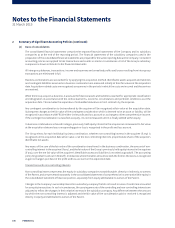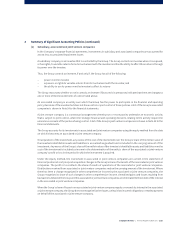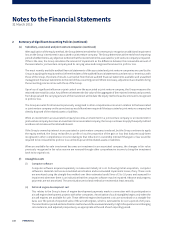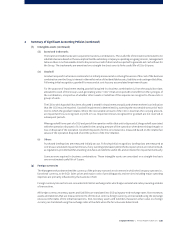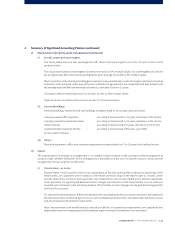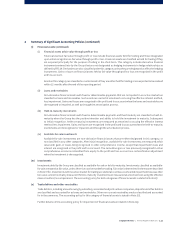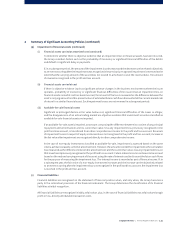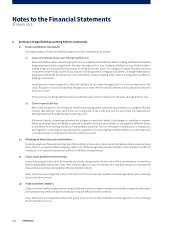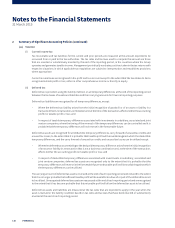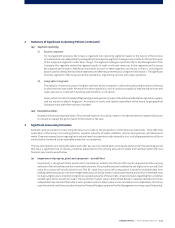Singapore Airlines 2015 Annual Report Download - page 117
Download and view the complete annual report
Please find page 117 of the 2015 Singapore Airlines annual report below. You can navigate through the pages in the report by either clicking on the pages listed below, or by using the keyword search tool below to find specific information within the annual report.
2 Summary of Significant Accounting Policies (continued)
(q) Impairment of financial assets (continued)
(i) Financial assets carried at amortised cost (continued)
To determine whether there is objective evidence that an impairment loss on financial assets has been incurred,
the Group considers factors such as the probability of insolvency or significant financial diiculties of the debtor
and default or significant delay in payments.
If, in a subsequent period, the amount of the impairment loss decreases and the decrease can be related objectively
to an event occurring aer the impairment was recognised, the previously recognised impairment is reversed to the
extent that the carrying amount of the asset does not exceed its amortised cost at the reversal date. The amount
of reversal is recognised in the profit and loss account.
(ii) Financial assets carried at cost
If there is objective evidence (such as significant adverse changes in the business environment where the issuer
operates, probability of insolvency or significant financial diiculties of the issuer) that an impairment loss on
financial assets carried at cost has been incurred, the amount of the loss is measured as the dierence between the
asset’s carrying amount and the present value of estimated future cash flows discounted at the current market rate
of return for a similar financial asset. Such impairment losses are not reversed in subsequent periods.
(iii) Available-for-sale financial assets
Significant or prolonged decline in fair value below cost, significant financial diiculties of the issuer or obligor,
and the disappearance of an active trading market are objective evidence that investment securities classified as
available-for-sale financial assets are impaired.
If an available-for-sale asset is impaired, an amount comprising the dierence between its cost (net of any principal
repayment and amortisation) and its current fair value, less any impairment loss previously recognised in the
profit and loss account, is transferred from other comprehensive income to the profit and loss account. Reversals
of impairment losses in respect of equity instruments are not recognised in the profit and loss account; increase in
the fair value aer impairment are recognised directly in other comprehensive income.
In the case of non-equity investments classified as available-for-sale, impairment is assessed based on the same
criteria as financial assets carried at amortised cost. However, the amount recorded for impairment is the cumulative
loss measured as the dierence between the amortised cost and the current fair value, less any impairment loss on
that investment previously recognised in the profit and loss account. Future interest income continues to be accrued
based on the reduced carrying amount of the asset, using the rate of interest used to discount the future cash flows
for the purpose of measuring the impairment loss. The interest income is recorded as part of finance income. If, in
a subsequent year, the fair value of a non-equity investment increases and the increase can be objectively related
to an event occurring aer the impairment loss was recognised in the profit and loss account, the impairment loss
is reversed in the profit and loss account.
(r) Financial liabilities
Financial liabilities are recognised on the statement of financial position when, and only when, the Group becomes a
party to the contractual provisions of the financial instrument. The Group determines the classification of its financial
liabilities at initial recognition.
All financial liabilities are recognised initially at fair value, plus, in the case of financial liabilities not at fair value through
profit or loss, directly attributable transaction costs.
Singapore Airlines | Annual Report FY2014/15 |115



